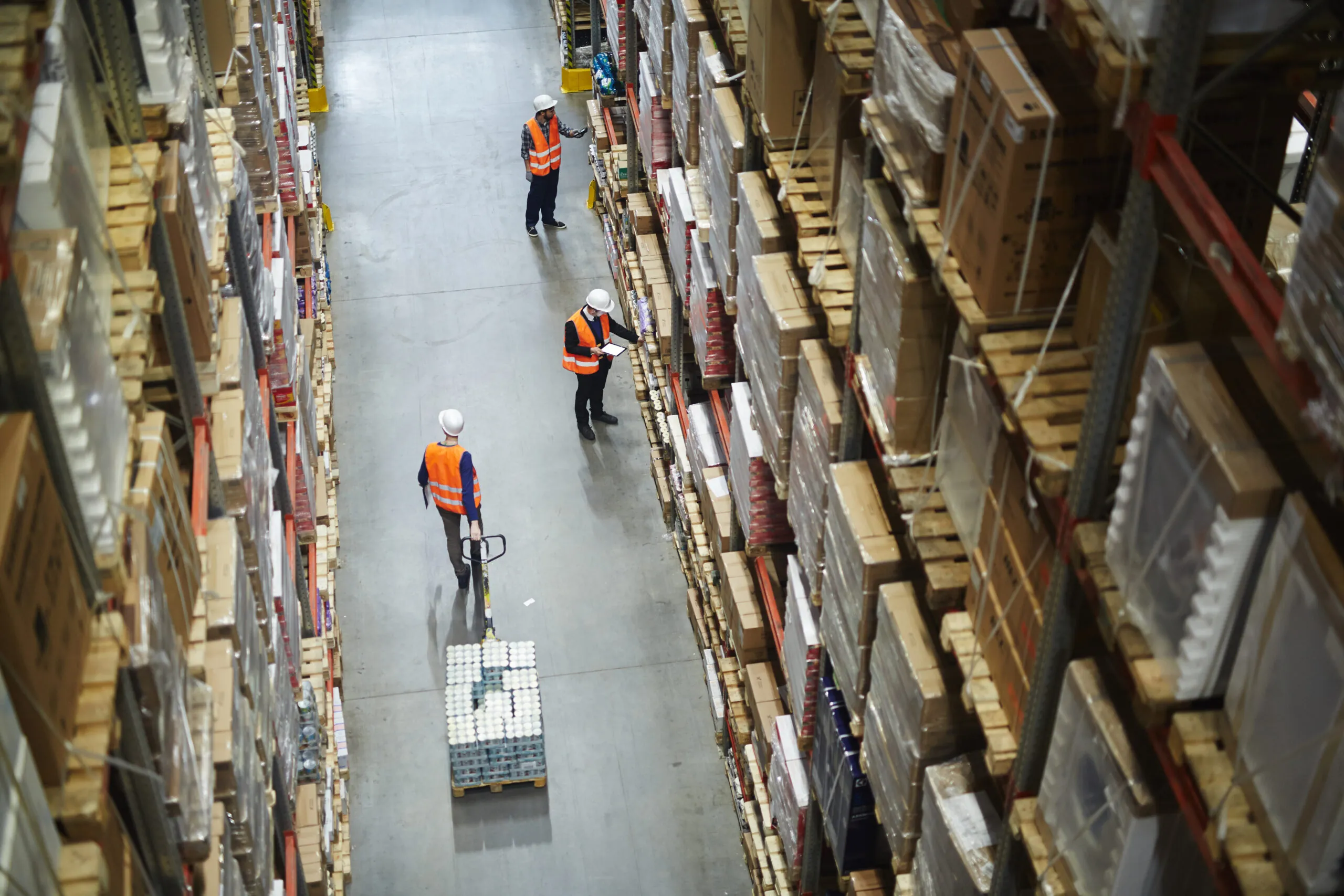
Tracking Fixed Assets Across the Modern Supply Chain
Overview
- Fixed assets are comprised of high value, long-term use inventory, can cost $260,000 per hour in unplanned production downtime if mismanaged.
- Common enterprise asset management challenges include inaccurate data, lack of visibility, timeliness, costly downtime and inability to scale.
- Modern asset tracking software can drive operational efficiency and oversight, even across dispersed geographies.
Fixed assets represent high-value inventory and can take many forms. They’re typically made up of large, influential items that are used, or stored, for at least a year. Fixed assets may include:
- Vehicles
- Furniture
- Fixtures
- Tools
- Equipment
- Machinery
- Electronics
- Expensive Parts
Although often employed for multi-year periods, a fixed asset’s value depreciates over time and is often associated with high maintenance costs. You can calculate an asset’s “depreciation schedule” to determine costs associated with a given accounting period and the remaining value of the asset.
Despite this, 65% of companies lack complete visibility into asset maintenance. Ineffective enterprise asset management (EAM) can prompt considerable downtime and inefficiencies throughout the entire business. Inaccurate data on fixed assets can impact MRO and plant maintenance, extending unplanned downtime at a costly $260,000 per hour.
Unfortunately, these assets can prove surprisingly difficult to track, especially with traditional paper-based and manual data entry recording methods. As enterprises grow larger and more geographically diverse, organizations increasingly need to track fixed assets across several work sites, cities, states and countries.
The modern enterprise needs a strategic, efficient system to track, maintain and deploy these high-value, long-term assets. Even the most vigilant EAM practices can only go so far without the right technology in place.
Asset tracking software provides a complete picture of the status of critical equipment, vehicles and other essentials. Asset tracking technology also makes it easier to determine when key elements are malfunctioning or lost. Many companies are already finding that using technology to track assets throughout their organization can streamline inefficiencies, cut costs and ensure optimal maintenance and equipment uptime.
Common Challenges of Tracking Fixed Assets
High-value asset tracking remains a consistent cross-industry challenge. Historically, assets have been treated as an afterthought – managers may only pay attention when something goes wrong. The use of opaque, outdated tracking methods only exacerbates the problem as managers don’t have the oversight they need to preempt issues or resolve problems quickly and efficiently.
If your business is tracking assets manually, you do so at your own risk. Maybe it’s the way you’ve always done it, you haven’t had the available funds to make the switch or simply weren’t aware there are efficiencies to be gained in this process area.
Manual tracking is not only tedious but time-consuming and highly prone to both human error and lack of up-to-date data. Many businesses aren’t even aware of how much money and productivity is lost from relying on manual or ineffective digital systems.
Let’s examine six ways manual processes may be hurting your asset management – and your bottom line:
1. Inaccurate Data
Take the following common scenario. An employee painstakingly jots down necessary information on a piece of paper before making his or her way to a computer and typing in a long asset number comprised of at least ten digits/characters. It should come as no surprise that workers regularly mis-key these characters.
In fact, re-keying data manually averages at least one error for every 300 keystrokes.
Given the high value of fixed assets, keeping accurate records is imperative. One seemingly small error directly equates to increased cost when assets are misplaced, lost, forgotten or double-ordered.
Failure to accurately track key metrics can lead to huge losses down the road. Imagine how much a business with a limited budget can waste maintaining rarely used equipment or paying for emergency repairs on poorly maintained machinery.
With asset tracking software, data accuracy can reach 99.99% or higher.
2. Timeliness
If your asset data isn’t accurate, then how can you trust that the information isn’t out of date? Using manual processes, it could take days for changes to be recorded in your ERP or tracking system. By the time the system is updated (if ever), the information may already be obsolete.
Maintenance technicians may go to a remote site to service machinery, such as a transformer or pump, only to find the parts they need aren’t available or that the machine has been moved or already fixed. This method wastes everyone’s time, consuming productivity and unnecessarily driving up production costs.
With timely asset data, the tech would already know what the status is and where his equipment and parts are located. To create timely asset data that updates your business systems as each transaction occurs, look to asset tracking software.
3. Lack of Visibility
Inaccurate, out-of-data data prevents true visibility into fixed asset location and availability. If you can’t trust your inventory readouts, you may end up investing in additional labor, materials and equipment, driving up operating costs.
Or, if asset locations aren’t recorded accurately, even the largest, most high-value items can be misplaced until depreciation costs consume the part’s value. The asset then becomes a write-off.
Even seemingly minor assets can dramatically hinder workflow if lost or otherwise inaccessible. Whether prompted by theft, negligence, or sheer incompetence, such losses can harm productivity, and ultimately, erode trust with vendors, clients and other key players. Lost materials prompted by outdated asset management can also lead to delays in servicing machinery, especially during periods of critical downtime.
A manager in charge of millions of dollars’ worth of assets lacks crucial insight into asset location, state and maintenance records. They have no idea if certain assets are idle at the wrong time, making it almost impossible to develop and implement plans for the asset’s appropriate utilization.
Real-time asset tracking solutions can solve a lack of transparency with 24/7 visibility so managers can easily determine if assets are being fully utilized at each site in real-time.
4. Efficiency
Manual asset tracking means the very effort meant to save businesses time may instead lead to significant inefficiencies. Manual processes are inherently labor-intensive and often require repeating and re-checking due to the unavoidable prospect of human error.
Timing and efficiency challenges grow that much more concerning as businesses expand geographically. Managers in one location may require instant access to information detailing valuable assets situated thousands of miles away. When several physical locations are at play, each additional step necessitated by a slow or outdated approach means more time wasted and more opportunities for error.
Asset software can increase efficiency, making assets 90% faster to manage.
5. Scalability
Simply put, manual processes aren’t scalable.
Traditionally, companies have tried to gain more productivity or achieve bigger outcomes by throwing more labor at their problems. If you win a bigger contract or need to grow operations, you must invest in hiring, training and overseeing more employees.
But in today’s climate with perpetual labor shortages, market instability and increasingly complex global supply chains, this historic approach will only serve to magnify the challenges mentioned above.
If you are thinking about adopting asset management software, leave tribal knowledge, paper tickets and spreadsheets behind. Consider solutions that are truly scalable and can grow with your business.
Driving Operational Oversight with Asset Tracking Software

Effective enterprise asset management comprises the entire lifecycle of fixed assets – maintaining and safeguarding each asset to maximize their use and value.
The modern supply chain is complex, necessitating increased oversight to ensure operations are viable for years to come.
That’s why some companies are replacing manual or outdated data entry with real-time asset tracking software. With asset tracking software, creating a new asset in your ERP system or database becomes as simple as applying a barcode label, scanning the label with a mobile device and confirming it to transact against the ERP.
Asset tracking software also enables you to:
- Create and record a new fixed asset in your ERP’s asset master table
- Conduct timely, accurate inventory counts with a simple barcode scan
- Instantly check the status of any fixed asset, from any location
- Seamlessly transfer a fixed asset from one location to another
- Remove a fixed asset when retired from service
- Perform on-site digital inspections for plant maintenance
And more.
ERP-based asset tracking also delivers valuable oversight to effectively plan and make decisions. Instead of guessing if asset locations and movements are correct (or second-guessing the numbers you have), a manager can monitor assets from the convenience of a screen, including where assets are, who used them for what purpose and what state they’re in. Software users can easily determine whether assets are being fully utilized at any given time or if certain assets are sitting idle.
Using Mobile Barcoding Technology to Track Assets
Mobile barcoding technology extends ERP functionality to mobile apps and handheld devices. Using digital process automation, each move or update in status is communicated to your ERP as soon as the change occurs, on-site or out in the field. When needed, assets can be diverted or transferred to other locations without the risk of being lost or misplaced.
Mobile barcoding is flexible and extensible, enabling users to track and control any type of inventory or materials as well. Organizations can approach EAM with the same degree of granularity and oversight as a distributor would its traditional inventory. By equipping workers with the critical business data they need at their point of work, you can drive control, oversight and efficiency wherever assets and inventory are managed.
Using mobile barcoding to track assets provides numerous benefits:
- 99.99% or higher data accuracy
- 24/7 asset visibility
- Real-time transactions, status and locations
- Reduced overhead costs
- 90% faster management
- Positive MRO impact
- Maximized fixed uptime and utilization
Mobile barcoding technology doesn’t stop at barcodes. The software component can communicate with any endpoint that sends or receives data, such as RFID, IoT/IIoT devices, automated material handling devices, MES, TMS, WOM, databases and more.
What Industries Benefit from Asset Tracking Solutions?
Asset tracking solutions can benefit any industry that handles assets or high-value inventory. Industries with critically supportive assets benefit the most, such as manufacturing, oil and gas, mining, steel, telecom and pharmaceuticals.
If your organization must manage large amounts of assets or maintain equipment over a large geographic area, asset tracking software can provide an immense boost. Utilities, government and municipal bodies, universities and corporate campuses can all see efficiency gains and reduce unnecessary spending on lost materials.
With asset management software, workers within these industries use wireless handheld devices to complete cycle counts, create fixed assets, dispose of fixed assets, complete location inquiries/transfers, check-in/check-out, issue to project, and more.
Each step transacts against the ERP in real-time at the point of work, greatly increasing operational visibility and efficiency.
Aerospace & Defense
Contractors serving DoD and government agencies must adhere to strict traceability, safety and work regulations in order to keep or win contracts. Keeping track of equipment, tools and machinery used in large-scale manufacturing of complicated projects makes asset and inventory tracking software a must. Documentation is key to maintaining compliance with DFARS, FAA FAR and other U.S. government requirements.
Government & Municipal
Whether at the municipal, state or federal government levels, strategic EAM equips government agencies with the necessary tools to minimize waste and spend public dollars strategically. Mobile barcoding solutions also provide the detailed records that agencies and contractors need to meet government regulations, standards and compliance.
Manufacturing
Manufacturers whose operations require advanced MRO to ensure production uptime can benefit from asset tracking solutions, such as mobile barcoding. Being able to quickly find the right tools, parts and equipment in the right location can be critical to preventing costly downtime. For businesses with complex process manufacturing like those operating in food and beverage, managing assets to maintain human safety is especially critical.
ALSO READ: Maximizing Uptime on the Shop Floor with Asset Tracking »
Mining & Metals
Effective asset management solutions are vital to ensure worker safety in the mining and metals industry, in addition to the numerous operational benefits. Equipment such as dewatering, centrifugal and piston pumps must always be carefully monitored to avoid degradation. When repairs are needed, it’s crucial that managers have accurate, timely visibility into the availability of tools, equipment and spare parts.
Oil & Gas
MRO is a critical component of oil platforms, refineries, and other high-risk oil and gas environments. Failure to identify and mitigate problems quickly puts production, and lives, at risk. Consistent, reliable network access can be difficult to secure at these offshore or remote locations, necessitating additional off-network mobility solutions, such as high availability, batch mode or offline inventory.
Pharmaceuticals
With increased regulatory oversight and compliance requirements, pharmaceutical companies must be even more diligent about monitoring and maintaining their expensive equipment throughout their production facilities. Improper upkeep may not only result in downtime but in critical safety violations as well.
Telecom
The telecom industry’s capital base is mainly comprised of fixed assets, making EAM even more essential. The extensive telecom infrastructure, such as fiber networks and cell towers, provides the foundation for critical nationwide communications systems, so downtime not only affects telecommunications but can have costly impacts on other industries and consumers as well.
Utilities
Utility companies often need to transfer high-value assets between remote locations and make repairs in areas with limited or spotty network connections. As with oil and gas, off-network availability solutions should complement mobile barcoding to ensure effective EAM.
Adopting an Asset Tracking Solution
The ideal asset tracking solution will help solve current and future challenges.
Modern ERP-connected asset tracking solutions can provide enormous value to organizations operating in singular and vertically integrated industries across the supply chain. When it comes time to evaluate an asset tracking solution, look for the following criteria to maximize your new technology investment:
Validated ERP Integration
Ideally, your new asset tracking solution should integrate into your IT ecosystem. Within this stack, it’s best to identify a solution that will not over-complicate your technical landscape. Pre-validated integration with business systems like your ERP – or multiple ERPs – that make use of your existing database is one way to simplify adoption and maintenance.
Built-in Mobility and Data Collection
In today’s increasingly mobile world, implementing an asset tracking solution that doesn’t include a built-in mobile platform would be a disservice to your organization. Using mobile barcode scanners or other handheld devices, workers would be able to scan barcodes to automate data collection and inventory transactions for fixed assets.
Cost of Adoption and Return on Investment
The upfront cost of adopting a new technology solution can be challenging. However, the return on investment, or ROI, is a key point to examine, as a rapid ROI will help offset that cost. Afterward, the money saved can be re-allocated to infrastructure upgrades or to fund other revenue-generating projects in your organization.
All of this should be considered when analyzing costs – asset tracking solutions can even positively affect insurance premiums through minimized risk assessments.
Flexibility, Extensibility, Scalability
Another vital aspect of a strong fixed asset tracking solution is its ability to not only solve today’s challenges but the challenges of tomorrow as well. For example, the RFgen Mobile Unity Platform™ includes mobile supply chain apps that track fixed assets, manage inventory, data collection, advanced directed-movement, low code mobile app development, and more. This allows companies to easily and quickly tailor, expand and scale their business processes in a way that perfectly matches their unique organizational needs.
Modern Asset Tracking Solutions
Paper-based processes and manual data entry belong in the world of yesterday in today’s age of digitization. Assets tie up large amounts of potential working capital and result in money lost in depreciation, lost high-value material and lost in the inability to perform maintenance when and where needed.
Using modern asset tracking solutions, organizations can drive efficiency, create transparency, cut overhead and maximize utilization.
Too many companies still track their high-value tools, equipment, spare parts and more using obsolete manual processes. Handwritten checklists and data entry can only frustrate and hinder your operation’s tracking efforts. Upgrading slow-moving processes with asset tracking software and mobility may prove transformative to your EAM best practices.
For any business in any industry that must manage a large number of assets over multiple locations, the ability to view, manage and track movements in real-time is necessary to remain competitive.
When considering potential asset tracking software, the ideal solution will offer room to expand into other areas as your business grows. This way, your solution will solve current and future challenges. Mobility, inventory control and mobile app development for supply chain apps are three invaluable areas to look for. Combined, they create a holistic solution for managing every type of inventory using high-quality data and real-time movements transacted at point-of-work.
If you are interested in improving your asset management skillset, consider reaching out to the Institute of Asset Management to explore their wonderful professional development and knowledge resources.
Get the Guide: How to Achieve Fixed Asset Tracking
Download the How to Achieve Fixed Asset Tracking with Mobile Barcoding and learn how to achieve real-time material visibility and control across the enterprise.







